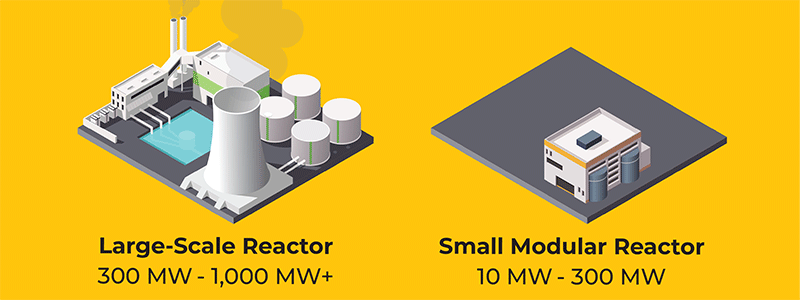September 2024 | By Jessica Donald and Spencer Grubbs
Keeping Texans energized:
Innovations in energy solutions
Texas stands at an energy crossroads, leading the nation in energy generation from natural gas and wind while also topping the charts in consumption. With booming population growth, expanding industry and extreme weather, demand on the grid is surging and projected to increase from 85,000 megawatts (MW) of power to roughly 150,000 MW by 2030. Yet, Texas' energy pioneers are exploring new horizons. Emerging technologies in hydrogen, nuclear power and large-scale battery storage are just a few of the technologies that could emerge as critical components of Texas’ energy expansion.
Projected Rise in Power Demand, ERCOT, 2023 and 2030
Hydrogen Production:
Modernizing Energy Solutions
Most commonly, hydrogen is extracted using natural gas in a steam-methane reforming process. Water can also be used to create energy through electrolysis. This process splits water into hydrogen and oxygen, producing only water vapor and energy and making it a potential zero-emission fuel.
Pro
-
A 2022 study estimated that hydrogen-rich, carbon-neutral energy production in Texas could bring an average net economic benefit of more than $120 billion and create 766,000 jobs within 30 years.
- Texas is ideal for hydrogen production — with its rich natural energy resources, strategic location and industry expertise, combined with its substantial existing hydrogen infrastructure, the state already produces more than 3.6 million tons of hydrogen annually and boasts a network of more than 900 miles of hydrogen pipelines.
Con
- The biggest hurdle to hydrogen production is cost. Current technology and infrastructure cannot yet support large-scale clean hydrogen, which demands hefty investments to expand.
- The hydrogen market is murky, plagued by price opacity, uncertain demand and a historic focus on large-scale uses with few buyers.
Next-Gen Nuclear: Small Modular Reactors
Small modular reactors (SMRs) signal the future of nuclear power with their efficient, transportable design. Currently, Texas is home to two nuclear power plants — in Somervell and Matagorda counties — each with two conventionally large reactors that can generate more than 1,200 MW of electricity. By contrast, SMRs generate 10 MW to 300 MW of electricity but tout safer designs that require minimal human intervention.
Pro
- Nuclear power is dependable, highly energy efficient and can be expanded with the potential of zero-carbon emissions.
- SMRs generate 300 MW of power per unit and offer cost savings from being used incrementally, meeting rising energy demands with flexibility and efficiency.
Con
- New nuclear facility developers confront large costs and stringent regulatory requirements, potentially making them less competitive on the market vs. other energy sources. Although much less expensive to build than conventional reactors, the capital costs for SMRs can still range from $50 million for microreactors that generate roughly 10 MW to $3 billion for larger reactors that generate up to 300 MW.
- Public fear abounds surrounding nuclear reactors in general, largely stemming from concerns over safety and nuclear waste disposal.
Power Up: Utility-Scale Battery Storage
Utility-scale battery storage systems stash electricity for later use, kicking in during peak times or emergencies to keep the grid steady. Texas' energy innovators are banking on these batteries to ensure a continuous power supply.
Pro
- Although they make up a fraction of Texas' electricity grid, on a single evening during Winter Storm Uri, a small number of batteries sent 2,172 MW to the grid, which dispatched enough electricity to power roughly 434,000 homes.
- Battery storage provides ancillary services that can be turned on and off, fulfilling crucial energy needs while stabilizing and reducing market prices.
Con
- As an emerging technology, battery storage regulations are in flux.
- The fluctuations in battery prices and material costs have left many developers skittish about diving into battery storage.
Texas continues to grow and face new energy demands, but innovations in hydrogen production, small modular reactors and utility-scale battery storage present promising solutions. Hydrogen, nuclear power and large-scale battery storage are just a few of the technologies that could emerge as critical components of Texas’ energy expansion.
For more information on energy expansion in Texas, check out the Comptroller’s Good for Texas Tour: Energy Edition.
Sources: Electric Reliability Council of Texas; U.S. Energy Information Administration; Global Home of Chemical Engineers; University of Texas at Austin; International Atomic Energy Agency; Federal Reserve Bank of Dallas; UtilityDive


